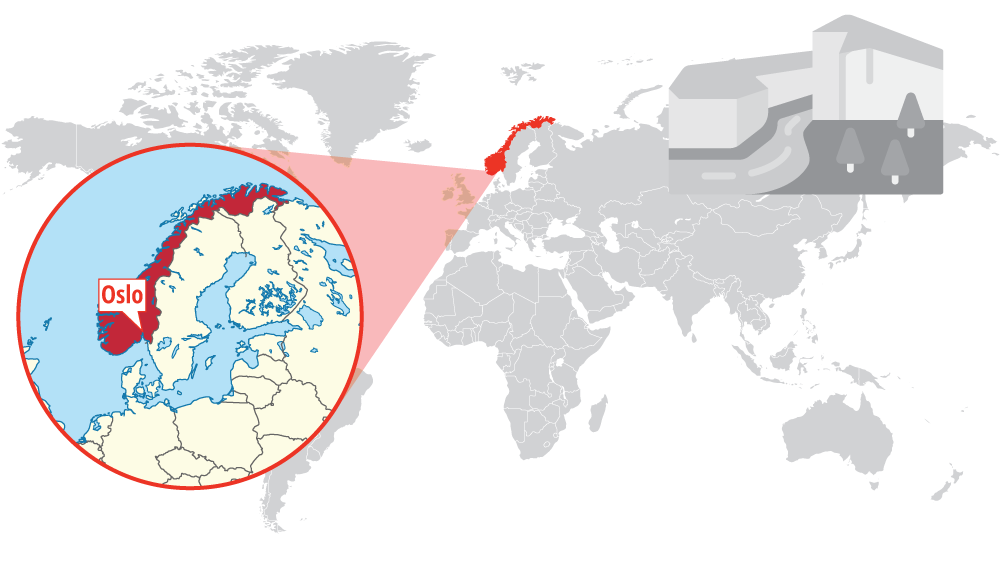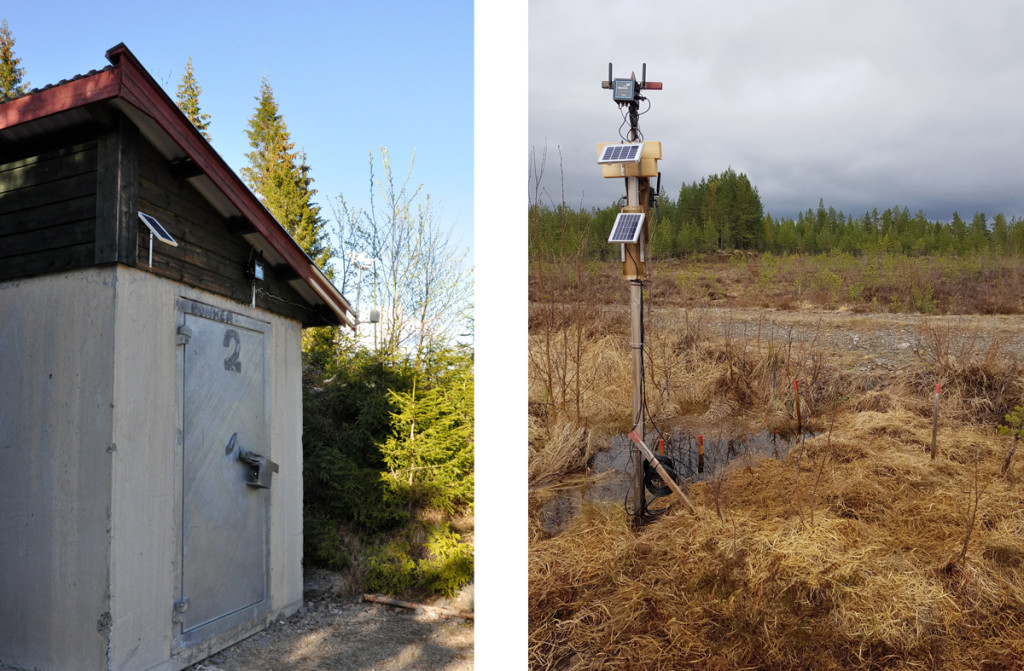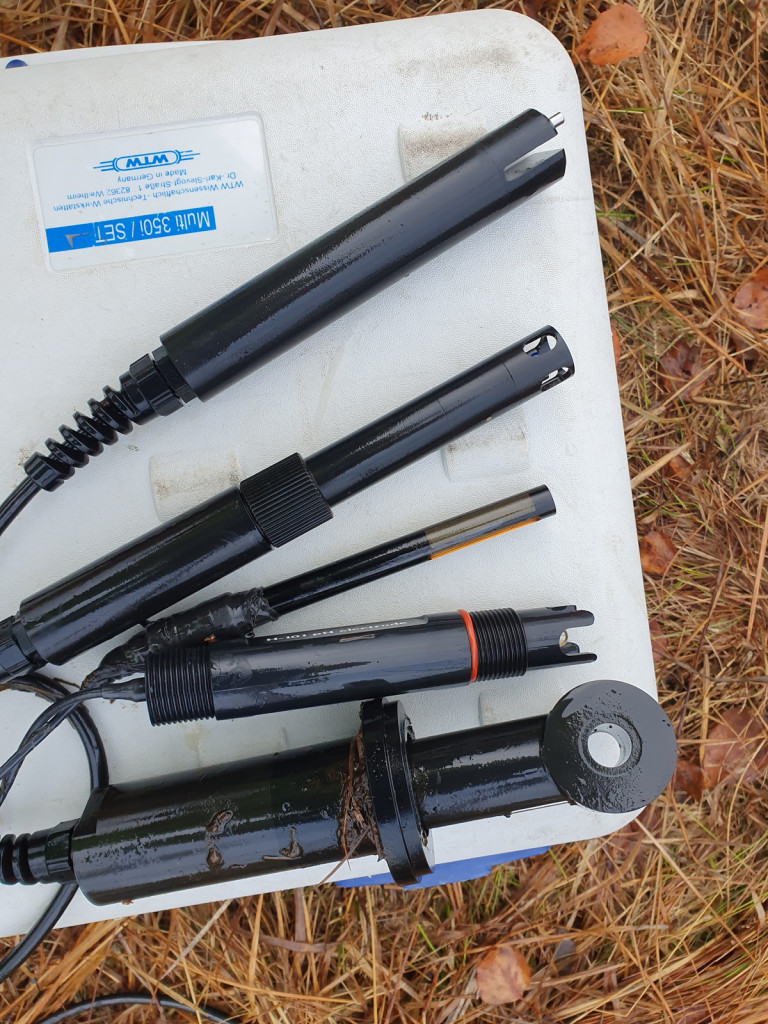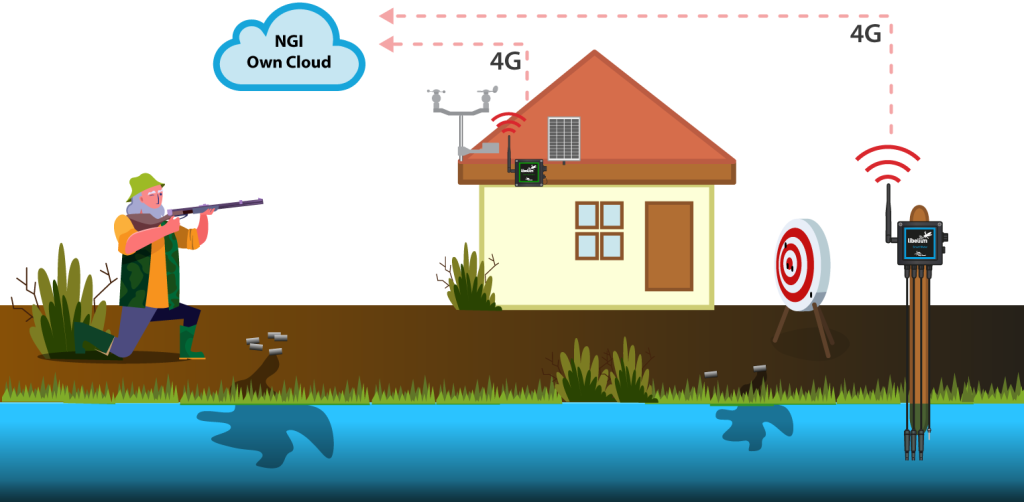Home / Casos de Éxito / Reducción de la escorrentía contaminada 40% de una zona de tiro con la plataforma de sensores IoT Libelium
 El programa Instituto Geotécnico Noruego (IGN) es un centro internacional de investigación y consultoría en geociencias relacionadas con la ingeniería, con sede en Oslo. Colaboran en todo el mundo identificando soluciones y ayudando a las autoridades y a la industria a limpiar suelos, rocas, sedimentos y aguas subterráneas contaminados. Para una de estas soluciones, contó con la ayuda de Dispositivos Libelium con resultados satisfactorios.
El programa Instituto Geotécnico Noruego (IGN) es un centro internacional de investigación y consultoría en geociencias relacionadas con la ingeniería, con sede en Oslo. Colaboran en todo el mundo identificando soluciones y ayudando a las autoridades y a la industria a limpiar suelos, rocas, sedimentos y aguas subterráneas contaminados. Para una de estas soluciones, contó con la ayuda de Dispositivos Libelium con resultados satisfactorios.

El IGN contamina el campo de tiro con 300 toneladas de grava
NGI ideó un sistema original para reducir la contaminación en la escorrentía de un campo de tiro. Cubrieron un campo de tiro gravemente contaminado (642 m2) con 300 toneladas de grava (25 cm) para dar un atajo a las aguas subterráneas de la zona contaminada, reduciendo así el transporte de contaminantes inorgánicos. El proyecto está vinculado a la comisión OSPAR: Protección del medio marino frente a la contaminación de origen terrestre y la escorrentía urbana (https://www.ospar.org/about)
Dispositivos Smart Water, Smart Water Xtreme y Smart Agriculture instalados
Los suelos de los campos de tiro suelen contener altos niveles de plomo (Pb) y antimonio (Sb) procedentes de la meteorización de las balas gastadas. Las concentraciones más altas de Pb y Sb suelen encontrarse cerca de las trampas de balas; sin embargo, debido a la meteorización de las balas gastadas y a la movilidad de los metales, la contaminación puede persistir durante cientos de años. Ambos tipos de contaminantes dan lugar a un gran problema de contaminación del agua y los suelos. Esta fuente de contaminación es muy difusa y difícil de localizar porque se origina en grandes zonas. Necesitaban monitorizar el impacto en la hidrología y la química del agua para comprobar si la solución era eficaz. Utilizaron dispositivos IoT de Libelium porque era crucial disponer de sensores de alta calidad para conocer la química del agua. Smart Water y sensores Smart Water
La principal motivación del proyecto es documentar la variación temporal de la escorrentía, difícil de captar con muestras periódicas. El seguimiento de la escorrentía de este lugar con el uso de registradores capta las grandes variaciones temporales sobre el terreno (hasta 36% de cambio en 24 horas en la concentración de plomo); de otro modo, no sería posible observarlo con las muestras de toma habituales.
De este modo, podrían medir cualquier tipo de variación en la química y la física del aguay luego compararlo con otras variables que le darían contexto, como los datos climáticos locales que describen las variaciones estacionales (nieve) y episódicas (sequía, lluvia). Además, el IGN destaca el escaso esfuerzo necesario para empezar, combinado con la capacidad de integrar las soluciones en sus sistemas a largo plazo.
Smart Water y sensores Smart Water
La principal motivación del proyecto es documentar la variación temporal de la escorrentía, difícil de captar con muestras periódicas. El seguimiento de la escorrentía de este lugar con el uso de registradores capta las grandes variaciones temporales sobre el terreno (hasta 36% de cambio en 24 horas en la concentración de plomo); de otro modo, no sería posible observarlo con las muestras de toma habituales.
De este modo, podrían medir cualquier tipo de variación en la química y la física del aguay luego compararlo con otras variables que le darían contexto, como los datos climáticos locales que describen las variaciones estacionales (nieve) y episódicas (sequía, lluvia). Además, el IGN destaca el escaso esfuerzo necesario para empezar, combinado con la capacidad de integrar las soluciones en sus sistemas a largo plazo.

Esquema del proyecto
Querían ver si era posible mantener la precisión de los parámetros químicos del agua a lo largo del tiempoes decir, que la deriva era suficientemente baja. Combinaron este seguimiento con el desarrollo de muestreadores pasivos que captan las variaciones de los parámetros químicos del agua, como la concentración de plomo. Los sensores se comunican a través de 4G con la propia nube del IGN, donde diseñaron un cuadro de mandos con el lenguaje de programación "R". "Los registradores Libelium nos permiten adquirir series temporales de alta resolución de sensores exactos y precisos como valioso apoyo a la toma de decisiones para nuestras medidas de remediación", afirma Andreas Botnen Smebye, geólogo medioambiental del Instituto Geotécnico Noruego (NGI). Gracias a las mediciones realizadas por la plataforma de sensores de agua Libelium observaron que las concentraciones totales de plomo eran ~40% más bajas tras las actuaciones llevadas a cabo en el campo de tiro.Este proyecto de IoT contribuye a alcanzar los siguientes Objetivos de Desarrollo Sostenible:
¿Quieres recibir estas y otras noticias sobre IoT directamente en tu correo electrónico?
🔔 ¡Suscríbete a nuestro boletín y no te pierdas nada! Aprenderás sobre IoT y cómo ayuda a hacer del mundo un lugar más sostenible y eficiente.
¡Inscríbeme!